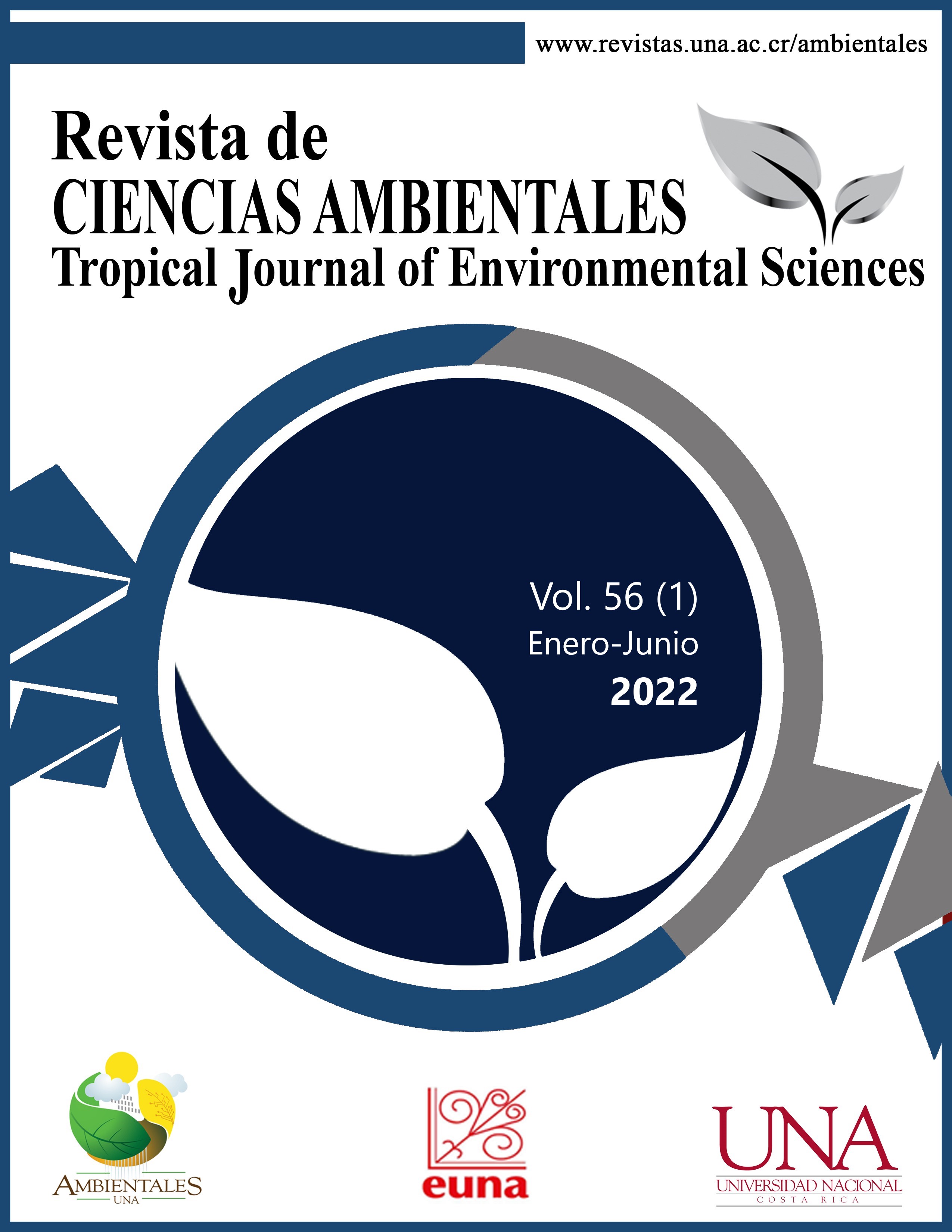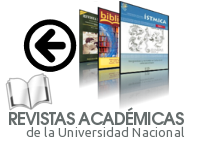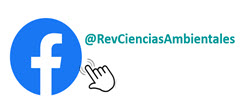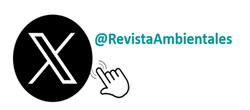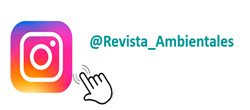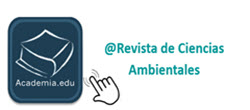Water quality for uses of human consumption and protection of the aquatic life in the Los Laureles reservoir of Tegucigalpa (2002-2016)
DOI:
https://doi.org/10.15359/rca.56-1.7Keywords:
Guidelines; indices WQI; parameters; pollution.Abstract
[Introduction]: From the Los Laureles reservoir it is generated an enormous amount of water quality data that are often not analysed and interpreted in a comprehensive manner, a limitation that also occurs in others reservoirs in the country and over the Central American region. This situation limits the knowledge for taking preventive actions in the face of contamination scenarios when the parameters are observed or analysed separately. [Objective]: The purpose of the research was to calculate and use different water quality indices in the Los Laureles reservoir during the time 2002-2016 with historical data, and analyse possible natural or anthropic factors that have contributed to its deterioration. [Methodology]: The indices were calculated using WQI software (version 1.2), based on historical information generated by the SANAA Laboratory at three sampling points (curtain, centre and tail), and including up to 23 physicochemical, microbiological, metals and metalloids parameters. Three different guidelines were used: one guideline of water quality for human consumption use and two guidelines for water life protection use. [Results]: The quality indices categorized the water quality of the Los Laureles reservoir for the use of human consumption as marginal to poor. The categorisation of use for aquatic life protection was regular. The decrease in the values of the indices and the categorization of water quality was observed when more parameters and samplings were included. [Conclusion]: In the comprehensive study, a historical decrease in quality was recorded due to the increase in the values of the parameters that exceeded the guidelines up to more than 25 times, even when it is only a parameter that will contribute to its decrease. In other words, the number of times that a parameter exceeded the guidelines had more influence than the number of failed parameters.
References
Alabaster, J.S. & Lloyd, R. (1982). Water Quality Criteria for Freshwater Fish. Second edition. ISBN: 9781483163116
American Public Health Association (APHA), American Water Works Association (AWWA), Water Environmental Federation (WEF). (2016). Standard methods for the examination of water and wastedwater (SMWW). http://www.standardmethods.org/Store/index.cfm
Burger, J. (2008). Assessment and management of risk to wildlife from cadmium. Science of The Total Environment, 389(1), 37-45. https://doi.org/10.1016/j.scitotenv.2007.08.037
Canadian Council of Ministers of the Environmental (CCME). (2016). Canadian environmental quality guidelines. https://www.ccme.ca/en/resources/canadian_environmental_quality_guidelines/
Canadian Council of Ministers of the Environment (1991, abril). Appendix IX—A protocol for the derivation of water quality guidelines for the protection of aquatic life. En Canadian water quality guidelines. Canadian Council of Resource and Environment Ministers.
CCME. (1999). Canadian Sediment Quality Guidelines for the Protection of Aquatic
Life. Canadian Council of Ministers of the Environment. Excerpt from Publication No. 1299.
Clemens, S., Aarts, M. G. M., Thomine, S. & Verbruggen, N. (2013). Plant science: The key to preventing slow cadmium poisoning. Trends in Plant Sciences, 18(2), 92-99. https://doi.org/10.1016/j.tplants.2012.08.003
Davis, J. C. (1975). Waterborne dissolved oxygen requirements and criteria with particular emphasis on the Canadian environment [NRCC No. 14100, National Research Council of Canada], Associate Committee on Scientific Criteria for Environmental Quality, Ottawa.
Diersing, N. (2009). Water quality: frequently asked question. Florida Brooks National Marine Sanctuary.
Doudoroff, O., & Shumway, D.L. (1970). Dissolved oxygen requirements of freshwater fishes. (FAO Technical Paper No. 86. Food Agriculture Organization), Naciones Unidas.
Filipič, M. (2012). Mechanisms of cadmium induced genomic instability. Mutation Research, 733(1 -2), 69-77. https://doi.org/10.1016/j.mrfmmm.2011.09.002
Global Water Partnership [GWP. (2011). Situación de los recursos hídricos en Centroamerica: Hacia una gestión integrada. https://www.gwp.org/globalassets/global/gwp-cam_files/situaciondelosrecursoshidricos.pdf
Helmar, R. et al. (1997). Water pollution Control -A Guide to the Use of Water Quality Management Principles-. WHO/UNEP
International Research Institute (IRI). (2016). IRI ENSO Forecast, 2016 december quick look. https://www.iri.columbia.edu/our-expertise/climate/forecast/enso/current/
Johnson, D. L., Ambrose, S. H., Bassett, T. J., Bowen M. L., Crummey, D. E., Isaacson, J. S., Johnson, D. N., Lamb, P., Saul, M., & Winter-Nelson, A. E. (1997). Meaning of environmental terms. Journal of Environmental quality, 26, 581-589. https://doi.org/10.2134/jeq1997.263581x
Mateos, J., Fereres, E., & Losada, A. (1996). Eficiencia del riego y modernización de regadíos. (En actas del XIV Congreso Nacional de riegos. AERYD), pp. 481-488. Almería, España.
Ministerio de Salud de Honduras. (1995). Norma Técnica para la calidad el agua potable del 4 de octubre de 1995. Acuerdo No. 084. Tegucigalpa, Honduras.
National Oceanic and Atmospheric Administration (NOAA). (2016). Physical Sciences Division, Boulder Colorado. https://www.esrl.noaa.gov/psd/
Organización Mundial de la Salud [OMS]. (2001). Environmental health criteria 221: Zinc. http://www.who.int/ipcs/publications/ehc/ehc_221/en/
Pernía, B., Sousa A. D. E., Reyes R., & Castrillo, M. (2008). Biomarcadores de contaminación por cadmio en plantas. Interciencia, 33(2), 112-119.
Poch, M. (1999). Las calidades del agua. Rubes Editorial S.L.
República de Honduras (1995). Norma Técnica para la Calidad del Agua Potable. https://docplayer.es/14822515-Norma-tecnica-para-la-calidad-del-agua-potable-acuerdo-no-084-del-31-de-julio-de-1995-vigencia-4-de-octubre-de-1995.html
Servicio Autónomo Nacional de Acueductos y Alcantarillados [SANAA]. (2011). Problemática de la calidad del agua del acueducto de Tegucigalpa. Ponencia del [XXVII Congreso de Centroamérica y Panamá de ingeniería sanitaría y ambiental].
United Nations [UN]. (2013). Water quality. http://www.un.org/spanish/waterforlifedecade/quality.shtml
United States Environmental Protection Agency [USEPA]. (2000). Folleto informativo de tecnologías de las aguas residuales. EPA Washington DC: 832-F00-024.
United States Environmental Protection Agency [USEPA]. (2016). National recommended water quality criteria - aquatic life criteria table. https://www.epa.gov/wqc/national-recommended-water-quality-life-criteria-table
Villalobos, H., & Hidalgo, J. (2011). Informe: Arsénico en el Agua Potable. Instituto Costarricense de Acueductos y Alcantarillados. https://www.aya.go.cr/centroDocumetacion/catalogoGeneral/Informe%20Ars%C3%A9nico%20en%20el%20agua%20potable.pdf
Welch, A., Westjohn, D., Helsel, D., & Wanty, R. (1994). Arsenic in ground water of the United States: Occurrence and Geochemistry. Ground Water, 38(4), 589-604. https://doi.org/10.1111/j.1745-6584.2000.tb00251.x
Published
How to Cite
Issue
Section
License

This work is licensed under a Creative Commons Attribution-NonCommercial-ShareAlike 4.0 International License.

